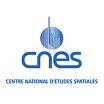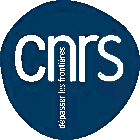|
Multi-Scale, Multi-Wavelength Filament Extraction GETFILAMENTSThis is a powerful multi-scale, multi-wavelength filament extraction algorithm. It shares the general multi-scale and multi-wavelength philosophy and approach with the source extraction method getsources (http://gouldbelt-herschel.cea.fr/getsources Being incorporated in getsources, the getfilaments algorithm brings substantial improvements to source extraction in filamentary backgrounds. Extraction of sources is also essential for an accurate reconstruction of the intrinsic intensity distribution of filaments. The intimate physical relationship between forming stars and filaments seen in Herschel observations demands that accurate filament extraction methods must remove the contribution of sources and, conversely, accurate source extraction methods must be able to remove underlying filamentary structures. The images of clean filaments are now subtracted by getsources from the original images during source extraction, significantly improving the robustness of the algorithm and reducing the chances of spurious sources contaminating extraction catalogs. An important benefit of the improved source extraction method is that, in addition to the catalogs and images of sources, it provides researchers with clean images of the filamentary structures that are the birthplace of stars. PUBLICATIONSAlgorithms used in this software are described in: Men'shchikov A. "A multi-scale filament extraction method: getfilaments" (2013) Astronomy & Astrophysics, vol. 560, A63. Download: A newer algorithm of image flattening is published in: Men'shchikov A. "Background derivation and image flattening: getimages" (2017) Astronomy & Astrophysics, vol. 607, A64. Download: A brief description of getfilaments is also presented in: Men'shchikov A. "The Fine Structure of the Web of Interstellar Filaments in the Gould Belt Clouds" (2014) Talk at the conference "Star Formation Across Space and Time", ESA/ESTEC, Noordwijk, The Netherlands, 11-14 Nov 2014 (http://www.cosmos.esa.int/web/herschel/star-formation-across-space-and-time). Download: CONTACTInquiries about the code, bug reports, constructive criticism, help requests, etc., can be directed to Alexander Men'shchikov: alexander.menshchikov@cea.fr UPDATESTo receive information on future updates of getfilaments, please complete the registration form (at http://gouldbelt-herschel.cea.fr/getsources) or send a message to the above address with the subject line getsources mailing list containing your e-mail address, your full name, and the name and address of your institute. To unregister, it is sufficient to send an e-mail requesting removal from the mailing list. Note on 2018-10-01. The original simple algorithm for creating skeletons of filamentary structures, described in the publication, has been very significantly improved. A version 2 of getfilaments and getsources (being developed and tested) implements the well-known Hilditch algorithm. Single-scale skeletons are now much more robust and trace the filaments reconstructed at a given spatial scale more accurately (no spurious short branches anymore). The new algorithm can also be implemented in the public version 1 (http://gouldbelt-herschel.cea.fr/getsources), if there is demand from the users (the changes would affect only the creation of skeletons, no other aspects of source and filament extraction). Please write me a message if you would like to have the standard version of the code updated. DISCLAIMERThe author makes no representations about the suitability of this software for any purpose. This software are provided as is without any expressed or implied warranty. The names of the institutions with which the author is or has been affiliated shall not be used to publicise any data and (or) results generated by this software. All findings and their interpretation are the opinions of the user and do not necessarily reflect those of the author nor the institutions with which the author is or has been affiliated. CODEFor information on how to install getfilaments and getsources, and to quickly start using them, please refer to the files INSTALLATION.GUIDE, QUICK.START.GUIDE, and USERS.CHECKLIST included in the distribution archive (at http://gouldbelt-herschel.cea.fr/getsources). Software requirements: (1) Computer with at least 4 GB of memory, many GB of disk space (preferably in locally attached hard drives: network drives are too slow). (2) Mac OS X or Linux operating system (other systems not tested). (3) Bash shell, CFITSIO library (by W. D. Pence), SWarp (by E. Bertin), Intel FORTRAN compiler or GFORTRAN version 4.5 or later (working installation), and WCSTools (by J. Mink). The latter is not strictly required, but without xy2sky from WCSTools, extraction catalogs from getsources will not provide world coordinates. #8 - Mise à jour : 02/10/2018
|

 Accueil
Accueil




